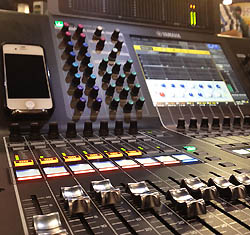
You Can’t Afford To Not Pay For Design
I know that sounds like an oxymoron, but it’s true. I’ve been in dozens of churches and talk to people in hundreds who decided to “save money” and figure it out on their own. Almost universally, the church leadership is unhappy with the results, the tech team is frustrated, and the congregation is missing out.
There is a misconception that design is super-expensive and only the big churches can afford it. The reality is, a well-designed system will likely cost less in the long run than a poorly designed system. That’s because the church won’t be doing it 2-3 times.
Moreover, the experience from day one will be better. When you bring in people who know what they are doing, they can work within your budget. Unless your budget is completely unrealistic, in which case go back and read the budget post.
A good designer will help you make hard decisions and keep the project on track. Most churches can’t get everything they want in a system, at least at first. A designer will help you prioritize so you get the right equipment first, with a path to add later.
Everything Else Is Designed
The HVAC system is designed; the electrical system is designed; the plumbing system is designed; heck, even the parking lot is designed. Why would you not want to design the AVL system?
The sound system is at least as critical as the bathrooms when it comes to hearing the message from the pastor. Why would a pastor leave that task in the hands of a volunteer with no design experience?
This is not to disparage volunteers, but again, I want to point out that operating is a lot different from designing. Pastors, don’t set your team up to fail. Get this done right.
You Still Have A Voice
Good designers listen to their clients. As a TD or volunteer tech, you should have some say into how the system goes together and how it works. When you define your system objectives and identify key technologies, you get to speak into the process. When the design comes back, if you have ideas, be sure to voice them.
Sometimes designers choose equipment based on preference or which manufacturers they work with. If you have a particular piece of gear in mind for a task, bring it up. Unless there is a good reason not to go with it, the change is easy in the design phase.
If you have specific ideas of how you’d like a system to lay out, or where to locate snakes, mixers, cameras and the like, by all means speak up. The designer needs as much information as possible. You’re the one who works in your church and you know better than the designer does what the needs are. Make sure to let them know your thoughts.
With good information, a good designer will give you a great system. And, more than likely, it will come in on budget. When that happens, everyone wins!
Mike Sessler now works with Visioneering, where he helps churches improve their AVL systems, and encourages and trains the technical artists that run them. He has been involved in live production for over 25 years and is the author of the blog Church Tech Arts.
